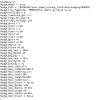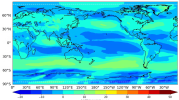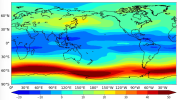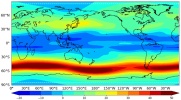I have conducted nudging in CAM6 and noticed that the target values during nudging differ from the reanalysis data.
Specifically, the nudging variables appear to compress along the latitude, as depicted in the image below (left is the reanalysis and right is the Target_U during nudging). I'm curious about the underlying issue and would appreciate any advice from someone familiar with this problem.
Thank you very much.
Wenjun
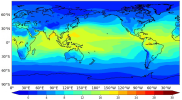
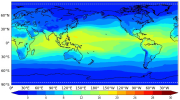
Specifically, the nudging variables appear to compress along the latitude, as depicted in the image below (left is the reanalysis and right is the Target_U during nudging). I'm curious about the underlying issue and would appreciate any advice from someone familiar with this problem.
Thank you very much.
Wenjun



